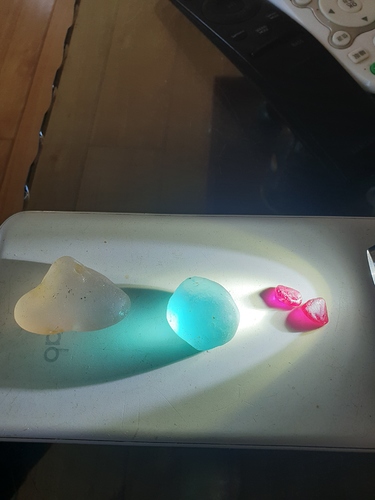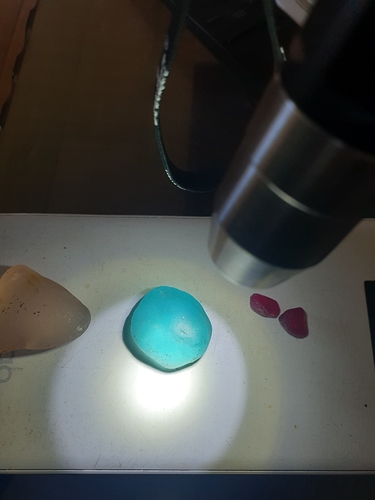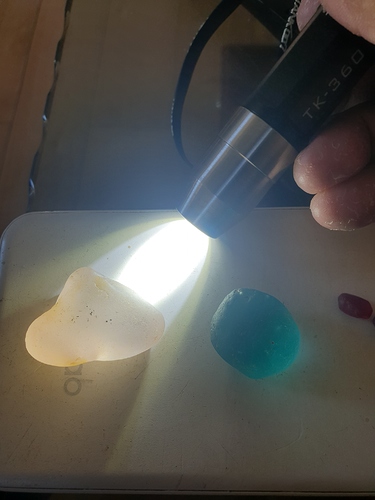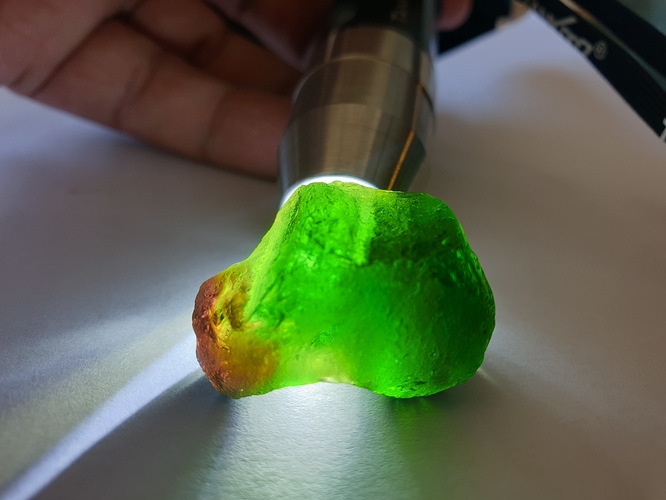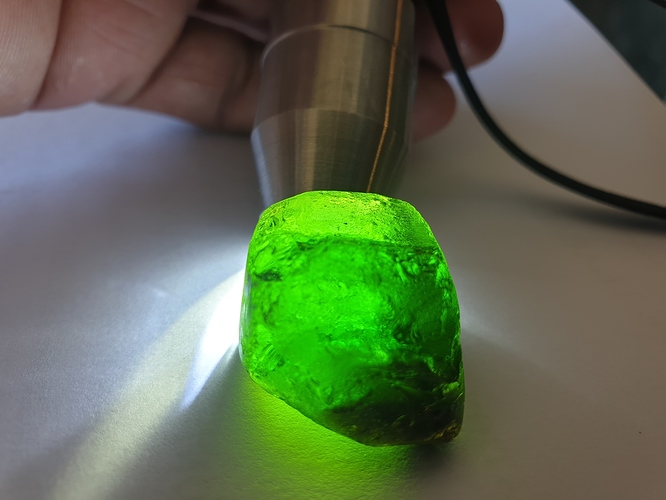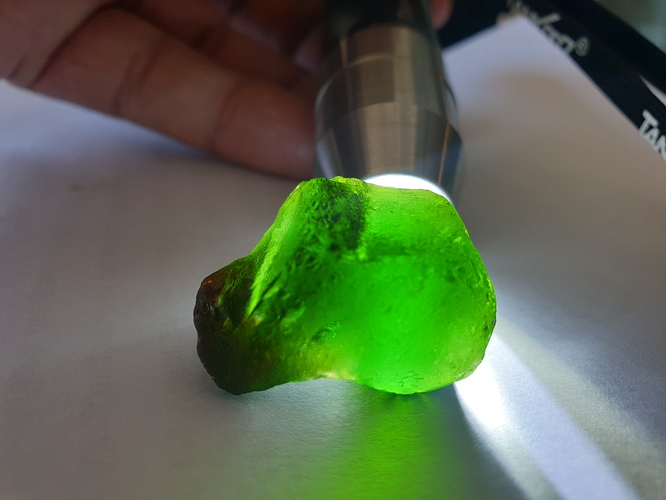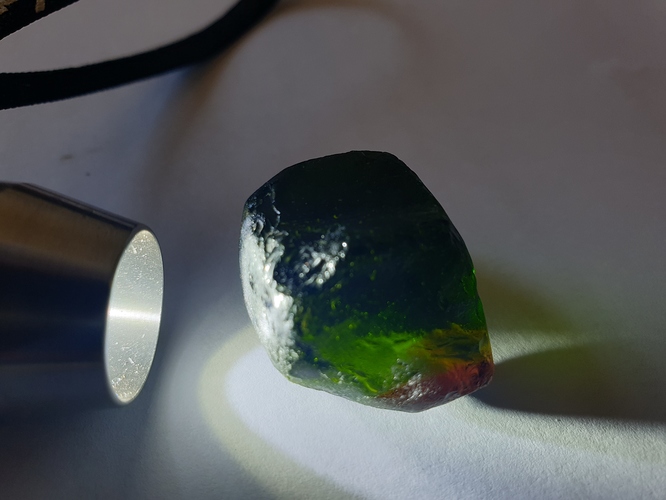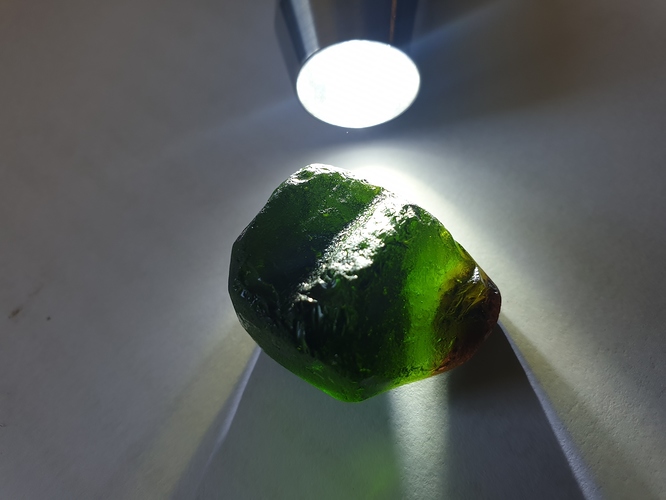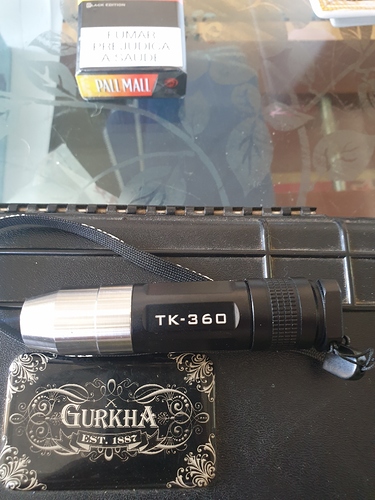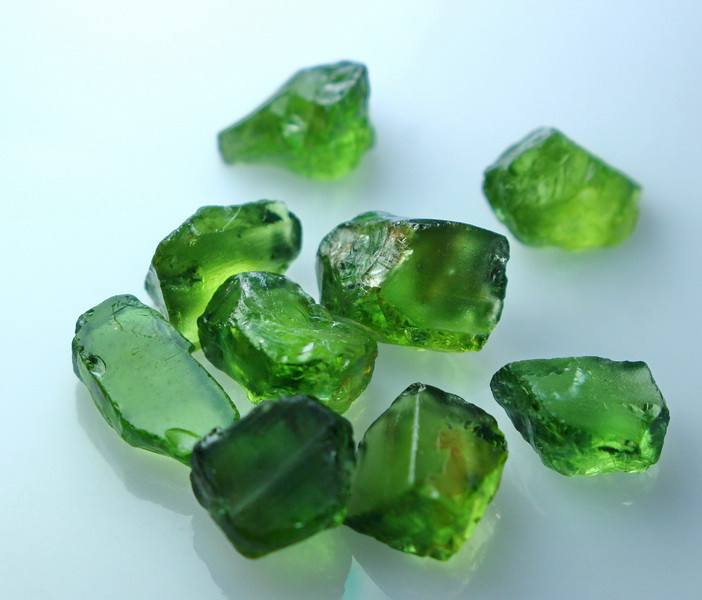Hello everyone, I’m novice in gemmology. I just received a beautiful neon blue rough stone from mine, can U have a look, is it Paraiba tourmaline??? Possibly glass?
It looks well ‘tumbled’ and is not showing any of the classic Tourmaline structures. First you should test the SG, hardness etc. In general Tourmaline has a higher SG than most glass, 3 - 3.2 and glass in the range of 2.05- 2.7 with some natural glass to 3.0 (Basalt Glass) But lead glass can be much higher.
Then you need to look inside the stone for signs of inclusions, growth planes, fractures etc, a man made material is unlikely to have these.
If the SG is in the 3.5 - 3.6 range, the material is more likely to be Topaz.
Finally the size, Paraiba Tourmaline is rare and the stones are small, this looks large. If it is Paraiba then it’s worth a kings ransom!
Thanks Dihusky! I wil check SG and come back. Possibly its just pcs of glass as I also have doubt with its large size but the stone come directly from famous tourmaline mine in Nampula - Mozambique.
I saw a “morganite” that supposedly had come driectly from the mine in Mozambique and it was peach glass. I have no doubt that the African I talked with brought it directly from the mine, but that is no guarantee that the parcel wasn’t salted at the mine. Really, if you have to ask this question, you are not ready to be buying rough tourmaline that is characterized as “Paraiba” and is a waterworn pebble with no typical tourmaline crystal signs. You also should know at least that all tourmaline shows pretty obvious dichroism.
Any piece of quartz will scratch glass easily and the feel of the scratching and the depth of the scratch will tell you the material is much softer than quartz. Quartz is unlikely to scratch tourmaline. Tourmaline will show dichroism (two colors from different directions) and no glass shows this and neither does quartz in any distinct way. You don’t need a dichroscope, just turn the stone and examine it from all angles. There is no need to go directly to an SG test, altho’ that might be helpful with an ID. That is a rather big piece of “paraiba”, so the price may give it away if the price is not high. A piece of cut paraiba tourmaline of two carats or more would go for north of $6000/ct in a fine color like that. As we seem to be continually repeating on here, “if it seems too good to be true, it probably is.”
I checked SG it turns out 2.65, so I guess it’s a pcs of glass. Thanks Roy.
I also have this rough green cystal ex Montepeuz, MOZAMBIQUE. It has weigh of16gr, SG 3.12 but I cant say it green Garnet or Chrome tourmaline. Help pls.
carateristics of watermelon tourmaline
Hello. Not Parayba. Sure
Off topic but what is the make and model our your light ?
You may want to check its hardness… the yellow green color is also characteristics of apatite, but if is much softer than garnet.
Chrome Tourmaline is readily identified by the use of a Chelsea Filter to indicate the presence of Chromium.
You are mostly correct; however, if there is too much Iron or Vanadium in the stone, it can mask the pink or red Chromium response in the Chelsea Filter. In other words, there ARE Chrome Tourmalines that do not show pink or red through the Chelsea Filter. Such stones tend to have a little yellowish green component though.
If that is Pariba its worth one heck of alot of cash! It needs to be tested!
Looks a lot like crushed 7UP bottle to me.
OR…it could also be Tsavorite Garnet
This is not Paraíba definitely
For separating from glass use a polariscope and then use a refractometer to separate from other gemstones. I have also used a spectroscope in the field for identifications. I work in rare and unusual gemstones and find that the RI is the best way to separate different gemstones, sometimes I need All the tests to identify a stone.
